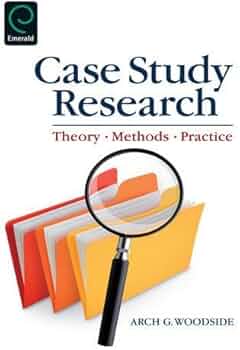Daftar Materi
Materi 3
Paradigma Penelitian
Materi 6
Kajian Literatur & Penelitian Relevan
Materi 7
Sota, Gap, Novelty
Materi 8
Fokus/Variabel. Pertanyaan, Signifikansi
Materi 10 Desain Kualitatif
Content Analysis
Etnografi
Evaluasi Program
Fenomenologi
Naratif
PTK
R & D
Studi Kasus
Materi 11 Desain Kuantitatif
Content Analysis
Evaluasi Program
Kausal
Korelasi
PTK
R & D
Survei






testosterone steroid
References:
https://www.asklent.com
jay cutler bodybuilder steroids
References:
500px.com
anavar injectable for sale
References:
maps.google.mw
most popular steroid
References:
https://md.chaosdorf.de/STuIzKMcSCOPpnnT-v1PbA/
steroids results
References:
med-koll-vahdat.tj
“Understanding Ipamorelin Peptide: Dosage Guidelines, Advantages, and Adverse Effects”
“Ipamorelin Peptide Deep Dive: Recommended Dose, Health Benefits, and Side‑Effect Profile”
“Ipamorelin Peptide Explained: Optimal Intake, Therapeutic Gains, and Potential Hazards”
Ipamorelin is a synthetic peptide that has gained popularity in the fields of anti‑aging,
bodybuilding, and clinical research due to its ability to
stimulate growth hormone release with minimal side effects compared to older analogues.
While many users report positive outcomes such as improved muscle mass, better sleep
quality, and enhanced recovery, it is essential to
understand both its therapeutic potential and the spectrum of possible adverse reactions that can arise from its use.
Ipamorelin Peptide: Dosage, Benefits, Side Effects
Dosage recommendations for ipamorelin typically range
from 200 µg to 500 µg per injection. The
peptide is often administered subcutaneously once or twice daily, usually in the early morning and before bedtime.
Some practitioners advocate a split‑dose protocol (100–200 µg each) to maintain steady growth hormone levels throughout the day, while others prefer a single larger dose to
maximize nighttime secretion.
The primary benefit of ipamorelin lies in its selective stimulation of
growth hormone‑releasing hormone receptors without significantly affecting
prolactin or cortisol. This specificity results in a
more physiologic release pattern that mimics natural circadian rhythms.
Users frequently note increased lean body mass,
reduced fat accumulation, improved skin elasticity, and accelerated wound healing.
In clinical settings, ipamorelin has been employed to
treat growth hormone deficiency and to support recovery after orthopedic
surgery.
Despite its favorable profile, ipamorelin is not free from side effects.
The most commonly reported adverse events include injection site reactions such as redness,
swelling, or mild pain that usually resolve within a few hours.
Some users experience transient headaches
or dizziness shortly after dosing, likely due to the rapid spike in circulating growth hormone.
Rarely, individuals may develop water retention and mild edema, particularly when combined with
other anabolic agents. Hormonal balance can be disrupted if the peptide
is used at excessively high doses or for prolonged periods; this may lead to symptoms such as acne, increased body hair, or changes
in libido.
Long‑term safety data are limited because ipamorelin has
not been approved by major regulatory agencies for widespread
therapeutic use. Consequently, there remains a theoretical risk of tumorigenesis or cardiovascular
complications associated with chronic growth hormone
elevation. Users should therefore monitor their health closely and
consider periodic endocrine evaluations to assess thyroid function,
insulin sensitivity, and lipid profiles.
What Is Ipamorelin?
Ipamorelin is a hexapeptide that mimics the natural growth hormone‑releasing hormone (GHRH) but with an improved pharmacokinetic profile.
Its sequence—His-Ser-Asp-Lys-Trp-Gly-amide—is
designed to bind specifically to GHRH receptors on pituitary somatotrophs, triggering
a cascade that culminates in the release of growth hormone into the bloodstream.
Unlike older peptides such as sermorelin or
hexarelin, ipamorelin does not significantly stimulate prolactin secretion,
which reduces the likelihood of breast tenderness or galactorrhea.
The peptide’s potency allows for lower dosages while
maintaining efficacy, thereby minimizing the risk of side effects
associated with high hormone levels. Its short half‑life (approximately 10–15 minutes)
means that it can be administered multiple times per day without causing a prolonged surge in growth hormone.
This characteristic is particularly advantageous for athletes and bodybuilders who seek to optimize anabolic conditions during specific training windows.
Key Takeaways
Effective Hormone Modulation – Ipamorelin selectively
increases endogenous growth hormone release with minimal impact
on other pituitary hormones, making it a preferred choice for those seeking natural anabolic support.
Typical Dosage and Administration – Commonly used doses range from 200 µg to 500 µg per injection, administered subcutaneously either once
or twice daily; split‑dose schedules help maintain stable hormone levels.
Common Side Effects – Injection site reactions, mild headaches, dizziness, and occasional water retention are the most frequently
reported adverse events; these are usually transient and dose‑dependent.
Rare but Serious Risks – Long‑term use may pose risks of tumor growth or cardiovascular issues due to chronic elevation of
growth hormone; regular medical monitoring is advised.
Limited Regulatory Oversight – As ipamorelin has not received broad approval from major health authorities, users should approach
its use cautiously and remain informed about evolving research on safety and
efficacy.
By balancing the peptide’s potent anabolic benefits with a clear awareness of its potential side effects,
individuals can make more informed decisions regarding its incorporation into fitness
or therapeutic regimens.
anabolic fat burner
References:
https://www.askocloud.com/
safest anabolic steroid for beginners
References:
https://md.ctdo.de/VetCIBeJRv-TKGeZ1cIL3A/
best muscle building drug
References:
https://www.google.sc